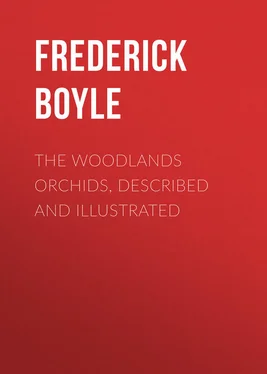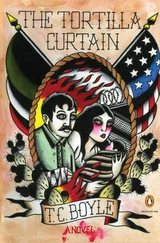Frederick Boyle - The Woodlands Orchids, Described and Illustrated
Здесь есть возможность читать онлайн «Frederick Boyle - The Woodlands Orchids, Described and Illustrated» — ознакомительный отрывок электронной книги совершенно бесплатно, а после прочтения отрывка купить полную версию. В некоторых случаях можно слушать аудио, скачать через торрент в формате fb2 и присутствует краткое содержание. ISBN: , Жанр: foreign_antique, foreign_prose, на английском языке. Описание произведения, (предисловие) а так же отзывы посетителей доступны на портале библиотеки ЛибКат.
- Название:The Woodlands Orchids, Described and Illustrated
- Автор:
- Жанр:
- Год:неизвестен
- ISBN:http://www.gutenberg.org/ebooks/32205
- Рейтинг книги:5 / 5. Голосов: 1
-
Избранное:Добавить в избранное
- Отзывы:
-
Ваша оценка:
- 100
- 1
- 2
- 3
- 4
- 5
The Woodlands Orchids, Described and Illustrated: краткое содержание, описание и аннотация
Предлагаем к чтению аннотацию, описание, краткое содержание или предисловие (зависит от того, что написал сам автор книги «The Woodlands Orchids, Described and Illustrated»). Если вы не нашли необходимую информацию о книге — напишите в комментариях, мы постараемся отыскать её.
The Woodlands Orchids, Described and Illustrated — читать онлайн ознакомительный отрывок
Ниже представлен текст книги, разбитый по страницам. Система сохранения места последней прочитанной страницы, позволяет с удобством читать онлайн бесплатно книгу «The Woodlands Orchids, Described and Illustrated», без необходимости каждый раз заново искать на чём Вы остановились. Поставьте закладку, и сможете в любой момент перейти на страницу, на которой закончили чтение.
Интервал:
Закладка:
The few plants here which enjoy a special designation are: —
Monica Measures. – Petals rose, with a broad streak of purple down the centre from base to point. Sepals also rose, tipped with purple. Lip of darkest crimson, fringed.
Lily Measures. – A very large flower, white of sepal and petal. On the lip, somewhat pale, as if to show it off, is a splash of purple-crimson, sharply defined.
R. H. Measures. – Sepals and petals tinted with rose. Enormous lip, very dark crimson, fringed.
William Lloyd. – For this I can only repeat the last description, yet the eye perceives a difference not inconsiderable.
Mrs. R. H. Measures. – All white saving the yellow throat and two small touches of purple in the front.
Duke of Marlborough. – This variety moved the great Reichenbach, as he said, to ‘religious admiration.’ No doubt it is the grandest of all Mendeliis – which is much to say; very large, perfectly graceful in form, exquisitely frilled. The colour of sepal and petal pink, the throat yellow, the spreading disc magenta-crimson.
The left side of the house is filled with large plants – some two hundred – of Cattleya Schroderae, which the learned recognise as a variety of Cattleya Trianae. It has the great advantage, however, of flowering in April, and thus, when discovered in 1884 by Arnold, collecting for Messrs. Sander, it filled a gap in the succession of Cattleyas. Henceforward the careful amateur might have one variety at least in bloom the year round. Named of course after Baroness Schröder. All Cattleyas are scented more or less at certain times of the day, but none so strongly as this, nor so persistently.
It does not vary so much as most of its kin, but it shows perhaps a greater tendency to albinism than any – as seems natural when its colours are so much paler. Among these grand plants we have three white, notably —
Miss Mary Measures , of which the picture is given.
Overhead hang smaller plants of Cattleya Mossiae, Trianae, Mendelii, and Laelia Lucasiana; among them no less than five Cattleya speciosissima alba.
Speciosissima Dawsonii is here also, finest of the coloured varieties – purplish rose of sepal and petal, lip large, yellow in the upper part, rosy crimson below, with margin finely fringed; and
Laelia pumila marginata. – In its ordinary form L. pumila is one of the loveliest flowers that blow, and admiration is enhanced by surprise when we observe how small and slender is the plant that bears such a handsome bloom. But this rare variety is lovelier still – its broad, rosy-crimson sepals and petals and its superb crimson lip all outlined with white.
The third division of the Cattleya house contains, in the centre, some hundreds of Mendeliis; Cattleya Bowringiana on the right hand, Cattleyas Mossiae and Wageneri on the left; all ‘specimen’ plants, for health and vigour as for size.
Cattleya Bowringiana was imported fifteen years ago from British Honduras, but it has since been found in other parts of Central America. In colour – rosy purple, with deep purple lip, white in the throat – it does not vary much, nor in shape; at least I have not heard of any named varieties. But Cattleya Bowringiana in good health is always a cheering spectacle; its young growths push with such a demonstration of sturdiness – having to rise much beyond the ordinary stature – and its bunch of eight or ten flowers stands so high above the foliage. Nowhere may that pleasant spectacle be enjoyed with more satisfaction than at Woodlands.
Since Cattleya Mossiae was introduced more than two generations ago, and remains perhaps the commonest of the species, I need not describe it. Mrs. Moss of Ottersfoot, by Liverpool, conferred the name in 1856. Love of orchids is a heritage in that family – so is the love of rowing. The lady’s grandson, Sir J. Edwardes Moss, now living, was Stroke of the O.U.B.C. and at Eton, as were his father and his uncle. And the ancestral collection of orchids is still maintained.
White Mossiaes are not uncommon, though their exquisite beauty makes them precious in all meanings of the term.
Mrs. R. H. Measures is best of all – a famous variety – white of sepal and petal. Deep and graceful frilling on the lip is always characteristic of this species; it reaches absolute perfection here. The yellow of the throat is much subdued, but purple lines issuing from it spread over all the white lip, with a very curious effect. Purple also is the frilling.
Grandiflora. – Deep rose. Petals very broad, lip immense, finely mottled and veined with purple.
Excelsior. – Blush-rose. Lip rosy purple, with a white margin.
Gilbert Measures. – A superb variety. White with a faint flush. Sepals and petals unusually solid. Lip very widespread, with purple lines and splashes of magenta-purple.
Gigantea. – Biggest of all. Rosy pink. The orange of the enormous lip and the frilling specially fine.
Catt. Wageneri, though granted a specific title, is a variety of Cattleya Mossiae, from Caracas, discovered by Wagener in 1851; white, excepting a yellow blotch on the lip.
From the roof, among a hundred smaller plants of Cattleya, hangs a specimen of Laelia praestans alba, as rare as lovely – all purest white, except the lip of brilliant purple with yellow throat. Like many other orchids from the high lands of Brazil, this will grow equally well in the cool house. It is, in truth, a variety of L. pumila; its normal colour rosy purple.
The fourth compartment is given up to Cattleya Gaskelliana, a species from Venezuela, not showy, as a rule – though striking exceptions can be found, as here – but always useful. Like Cattleya Schroderae it filled a gap when discovered in 1883, for there was no species at the time which flowered in July. Its normal colour is mauve; the lip has a big yellow blotch and a mottling of purple in the front.
About four hundred plants are accommodated in this house, among them four albinos – one with eight pseudo-bulbs and two flowering growths. But the finest flower is
Miss Clara Measures. – snowy white, of course, but with a lip like Cattleya Mossiae. Among others notable are: —
Dellensis. – A noble variety. Mauve-pink – the petals immensely broad. The great spreading lip has a gamboge throat fading to chrome-yellow, intersected with lines of bright crimson. The crimson of the front is defined as sharply as if by the stroke of a paint-brush.
Godseffiana. – Pale rosy mauve. Petals immense. Lip a curious dusky crimson, with a narrow dusky-yellowish outline.
Duke of Marlborough. – Gigantic. Sepals and petals bright rose; the broad lip has the same dusky outline.
Measuresiana. – Very pale. The crimson of the lip, which is long but comparatively narrow, runs far up the throat, but leaving two clear yellow ‘eyes’ as distinct as in Cattleya gigas.
Sanderiana. – Pale. The lip, of excellent colour, spreads so suddenly as to form a perfect circle.
Herbertiana. – Mauve. A very compact flower. The bright yellow of the throat extends downwards and to either side of the lip in a very remarkable manner. The dusky margin surrounds a purple-crimson stain, scored with lines of deeper hue.
Woodlandsensis. – Here the same oddity – due to natural hybridisation doubtless – is carried much further. The whole disc of the lip is buff, with only the merest touch of purple on either side the central line, and another, scarcely perceptible, at the tip.
Along the roof hang small plants of Cattleya gigas and others.
Читать дальшеИнтервал:
Закладка:
Похожие книги на «The Woodlands Orchids, Described and Illustrated»
Представляем Вашему вниманию похожие книги на «The Woodlands Orchids, Described and Illustrated» списком для выбора. Мы отобрали схожую по названию и смыслу литературу в надежде предоставить читателям больше вариантов отыскать новые, интересные, ещё непрочитанные произведения.
Обсуждение, отзывы о книге «The Woodlands Orchids, Described and Illustrated» и просто собственные мнения читателей. Оставьте ваши комментарии, напишите, что Вы думаете о произведении, его смысле или главных героях. Укажите что конкретно понравилось, а что нет, и почему Вы так считаете.












